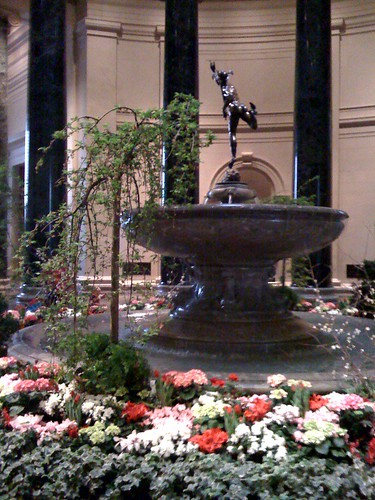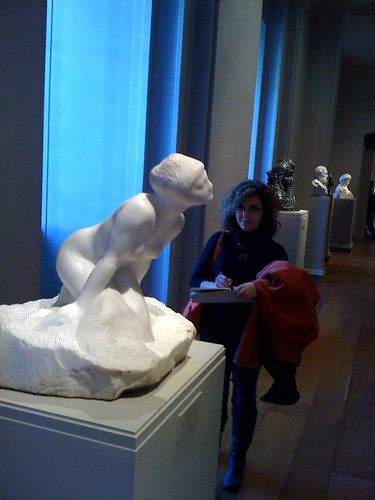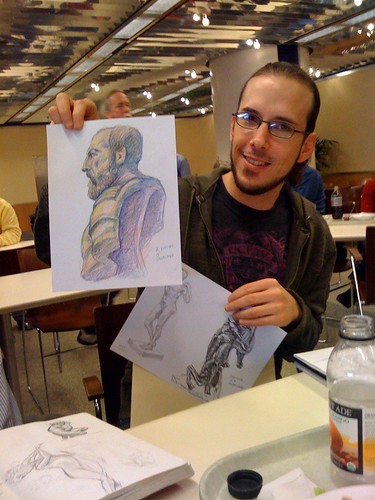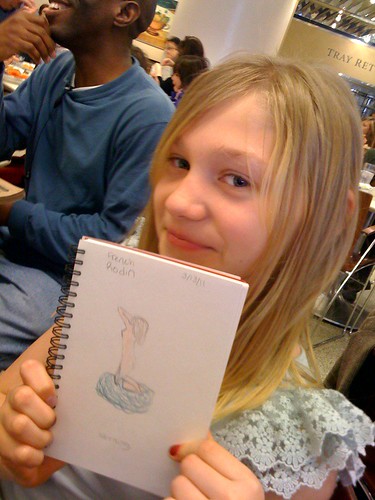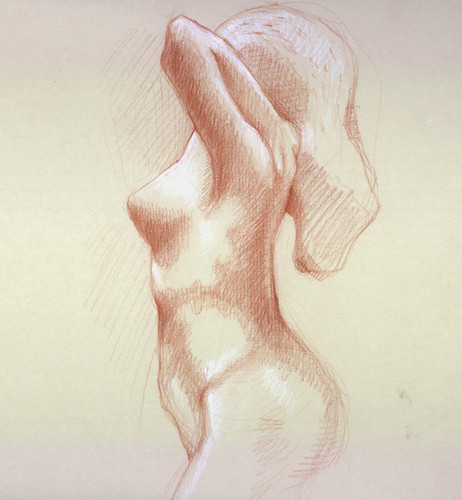Last Saturday I attended an
educators seminar about the
Venice: Canaletto and His Rivals exhibition at the
National Gallery of Art (NGA) in Washington, DC. I have attended these seminars in the past and they are excellent.
The program began with a lovely breakfast and introduction to the program. Our first speaker was
Eric Denker, Senior Lecturer at the NGA, giving an overview of the exhibition and putting it into context. Denker began the lecture by reviewing the geography of
Venice. Venice is made up about 110 small islands all connected by about 450 bridges. The
Grand Canal which weaves its way through Venice is 2.5 miles wide. In all Venice is only 3 miles long x 2.5 miles wide. Of course it seems much larger, especially when you are lost in its labyrinth.
In the 18th c. Italian painters started following in the Dutch tradition of painting cityscapes. The first documented "view painting" or
vendutismo of Venice was painted in 1697 by Dutch artist
Gaspar van Wittel called Gaspare Vanvitelli. He painted in his Rome studio from large, detailed sketches.
 The Molo from the Bacino di San Marco
The Molo from the Bacino di San Marco, 1697 by Gaspar van Wittel.
Giovanni Antonio Canal called "
Canaletto" was born in Venice in 1697. His painting style developed and matured quickly and by the 1720s he was painting commissioned views of his native city. Canaletto's early works are large, atmospheric works, often including genre scenes.
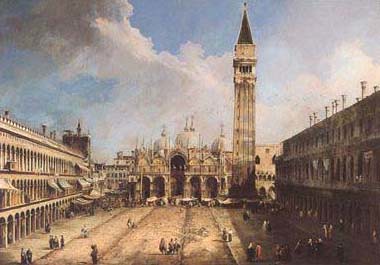 The Piazza San Marco, looking East
The Piazza San Marco, looking East, 1723 by Canaletto.
Within a few years art dealer Joseph Smith was commissioning Canaletto to create paintings for British patrons who were traveling to Italy on the
Grand Tour. Smith wanted the paintings of Venice to be bright, sunny and detailed. In a sense these paintings were high end sourvenirs of the Garnd Tour, which included travel to Rome, Florence and Venice.
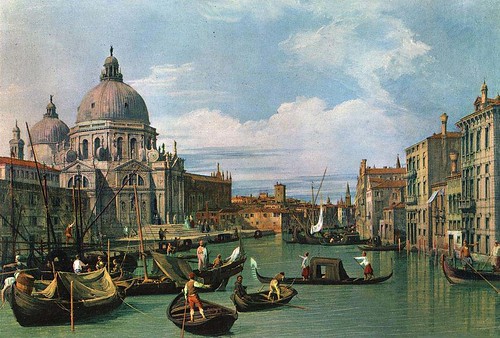 The Entrance to the Grand Canal, with Santa Maria della Salute
The Entrance to the Grand Canal, with Santa Maria della Salute, 1729 by Canaletto.
As Canaletto's commissions increase he brought his talented nephew
Bernardo Bellotto under his wing. Starting at age 16 he created 55 paintings of Venice.
 The Piazetta, looking North
The Piazetta, looking North, 1743 by Bernardo Bellotto.
It is interesting to note that many of Canaletto's paintings of Venice are 'spliced" together. They are scenes that don't exsist in life, but are idealized views of an amazingly beautiful city. I highly recommend The Venice: Canaletto and His Rivals exhibition at the National Gallery of Art. The exhibit closes May 30,2011. There are films, lectures and concerts in conjunct with this exhibit: http://www.nga.gov/exhibitions/veniceinfo.shtm
